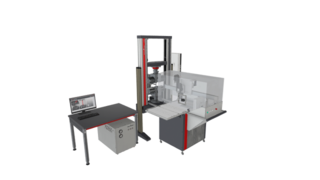Why You Should Consider Automating your Materials Testing Processes
An automated test system costs a lot of money, and yet robotic testing systems have been used successfully for years. Learn more about why investing in a robotic testing system is worthwhile and how it pays for itself in a very short time.
3 reasons for automating Interview Determining automation potential Benefits for your company

Maximum efficiency/flexibility

Only the material counts

Ready for the future
When is automation worthwhile? Find out in the next 60 seconds!
More than 90% of our automation options pay for themselves within the first 2 years. Use our ROI calculator to easily determine if a fully automated system makes sense for you. With the availability of smart robot solutions and standardized robotic systems, cost-effective automation of your quality control processes—even when testing a small number of specimens per day—can be worth looking into.
Already working with one of our testing machines?
Our robotic testing systems can also be retrofitted to existing customer machines. Get in contact with our automation experts to find out more.
Need a detailed return on investment calculation?
Our automation experts will prepare a customized calculation for your testing needs and requirements. For example, specific company wages or labor hours and shift models are also taken into account. The detailed test sequence is also included in this calculation.


Why don’t more organizations use automated materials test systems?
More manufacturers than ever are harnessing automated materials testing to realize the benefits discussed above. In our experience, however, many organizations that could otherwise benefit from automated testing are still unsure if it is the right fit for their unique business requirements. Of course, every business is different. But in some cases, misconceptions about automation prove unnecessarily limiting—and can cause businesses to leave value on the table.
In general, many professionals hear “automation” and imagine a large, automotive-style assembly line full of large robotic arms. While this type of solution may be right for some use cases, today’s automated testing solutions are much more diverse and flexible. They can help large testing facilities accommodate more throughput and scale operations seamlessly to match demand. But they can also be configured for small testing labs or new manufacturers in early stages of growth.

